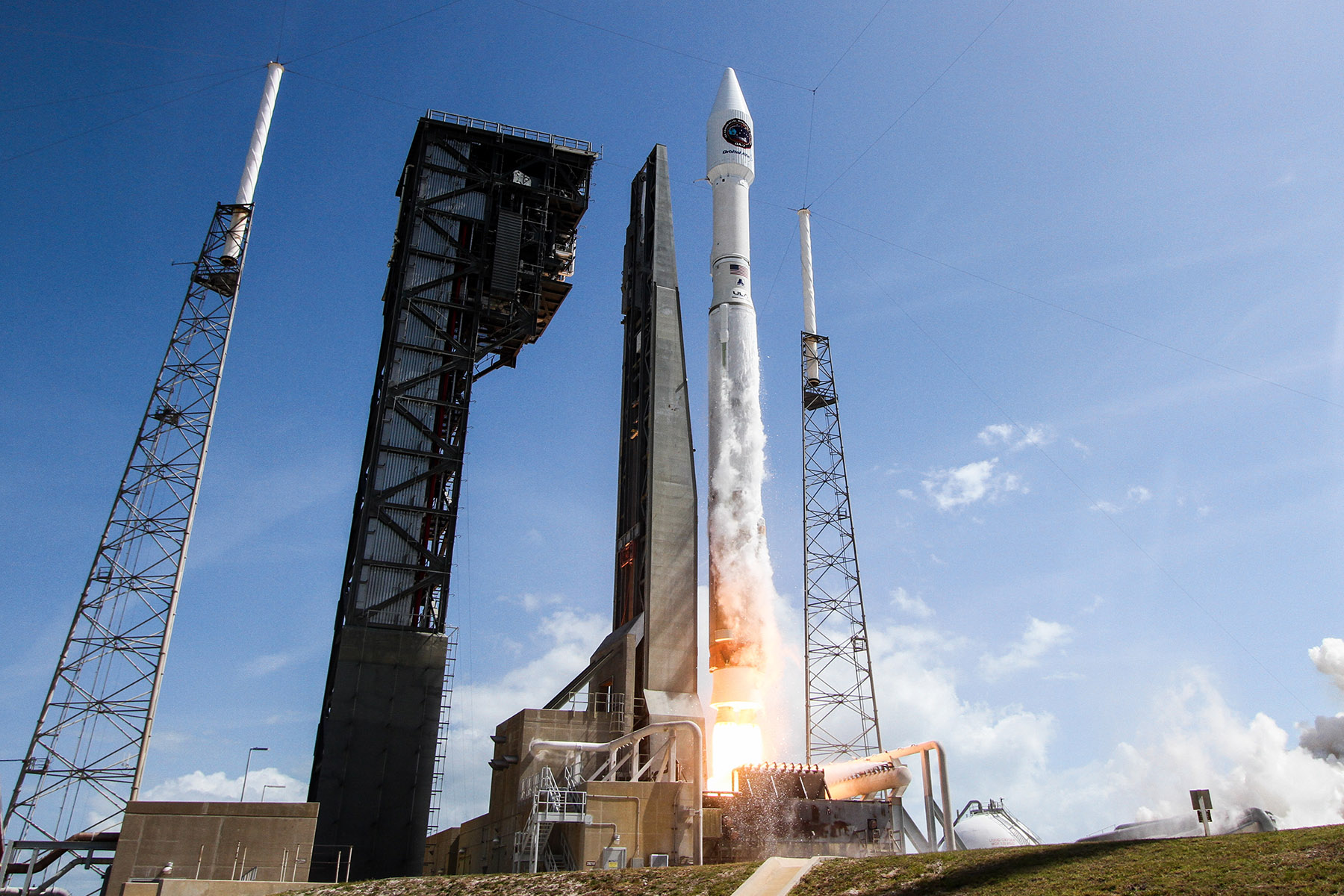The Air Force is moving forward on a congressional mandate to end reliance on the Russian-made RD-180 rocket engine, which powers the Atlas V. Here, NASA’s Orbital ATK’s Cygnus spacecraft prepares to launch from Cape Canaveral AFS, Fla., aboard a United Launch Alliance Atlas V on April 18, 2017. United Launch Alliance photo.
The Space and Missile Systems Center released a draft solicitation for launch services on Oct. 5 with implications for the Air Force’s RD-180 replacement strategy.
The service plans to pursue its congressional mandate to end reliance on the Russian-made RD-180 rocket engine, which currently powers the first-stage booster on United Launch Alliance’s Atlas V rocket, by purchasing launch systems with US-made engines. According to the draft RFP, SMC expects to award new launch services contracts to two companies in 2020 for launches beginning in 2022.
The Air Force plans to swap launch system development funding, including domestically produced rocket engines, for launch service commitments. Through public private partnerships, SMC will “partially fund industry’s new and/or upgraded launch systems in return for commitments to provide future [National Security Space] launch services.” These partnerships will be structured through other transactional authorities for prototype projects that “will reduce the overall cost to the Air Force,” according to the RFP.
This launch system development phase of the effort to replace the RD-180 follows an early technology maturation phase, and a Rocket Propulsion Systems (RPS) phase, which saw SMC grant public private agreements to SpaceX, Orbital ATK, United Launch Alliance, and Aerojet Rocketdyne in 2016. To receive these awards, each company had to demonstrate that their engine development work was “part of a planned or ongoing industry EELV-class launch system upgrade or development.”
SMC’s goal in the launch systems phase is “to have two domestic, commercial launch service providers that also meet NSS requirements, including the launch of the heaviest and most complex payloads.”
The focus on launch systems in the RD-180 replacement process emerges from SMC’s mandate “to ensure that there are two reliable sources for all national security launches,” according to the draft RFP. In defense of this mandate, the Air Force strongly opposed in June to a congressional effort to limit EELV investment spending to rocket engines.
Now SMC wants to mature prototypes for “up to three launch systems as early as possible,” but it will select only two NSS launch service providers in the end. Companies may offer completely new launch systems or modifications of existing launch systems for the program.
Under the new launch services contracts, the Air Force plans to “order launch services annually.” SMC would make contractor decisions for individual or batch launches based on a “share ratio.” According to this ratio, the contractor offering the best value would receive “the majority of the available launch services,” while the second contractor “would be rewarded the remainder.”
